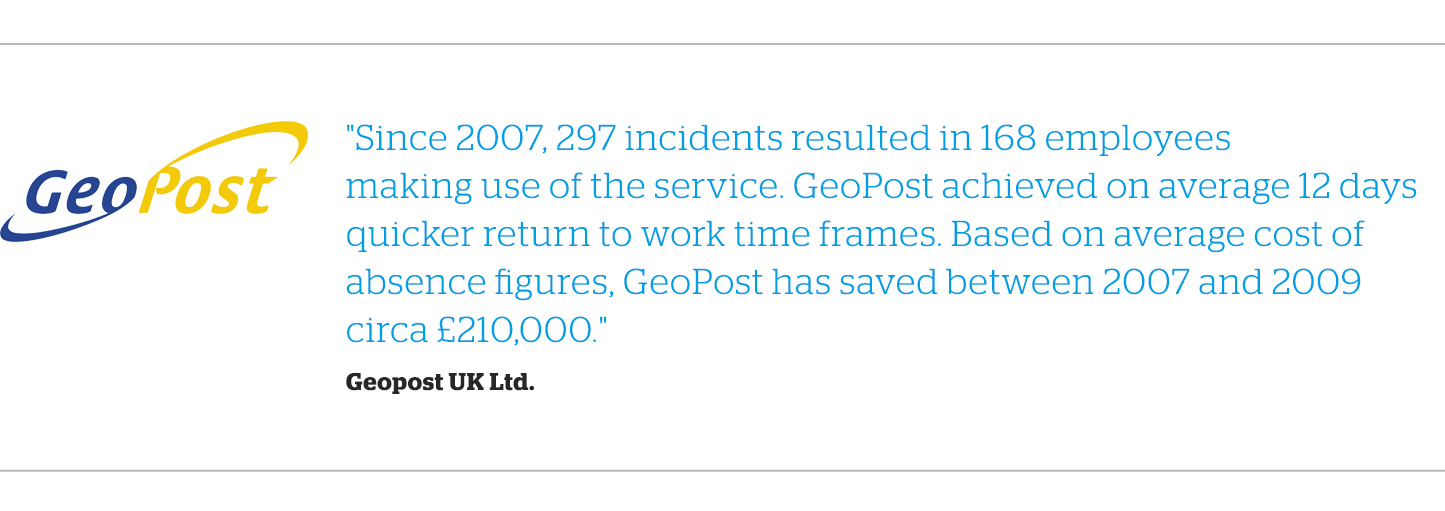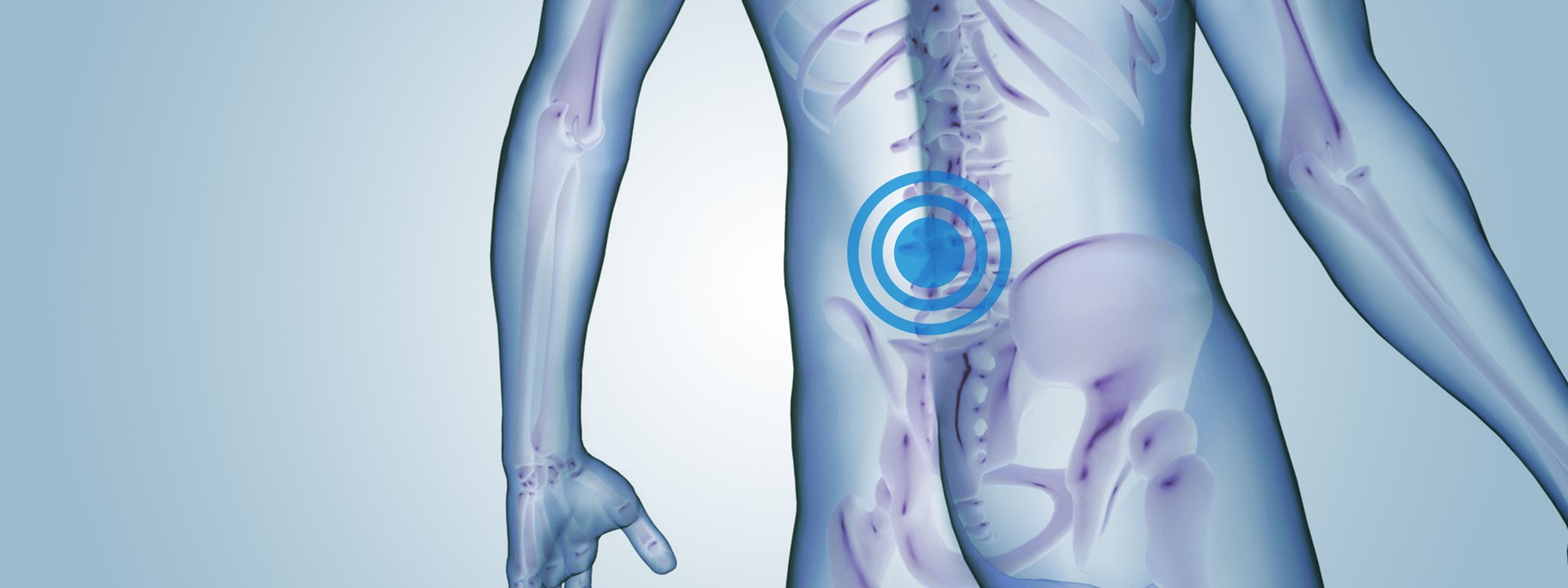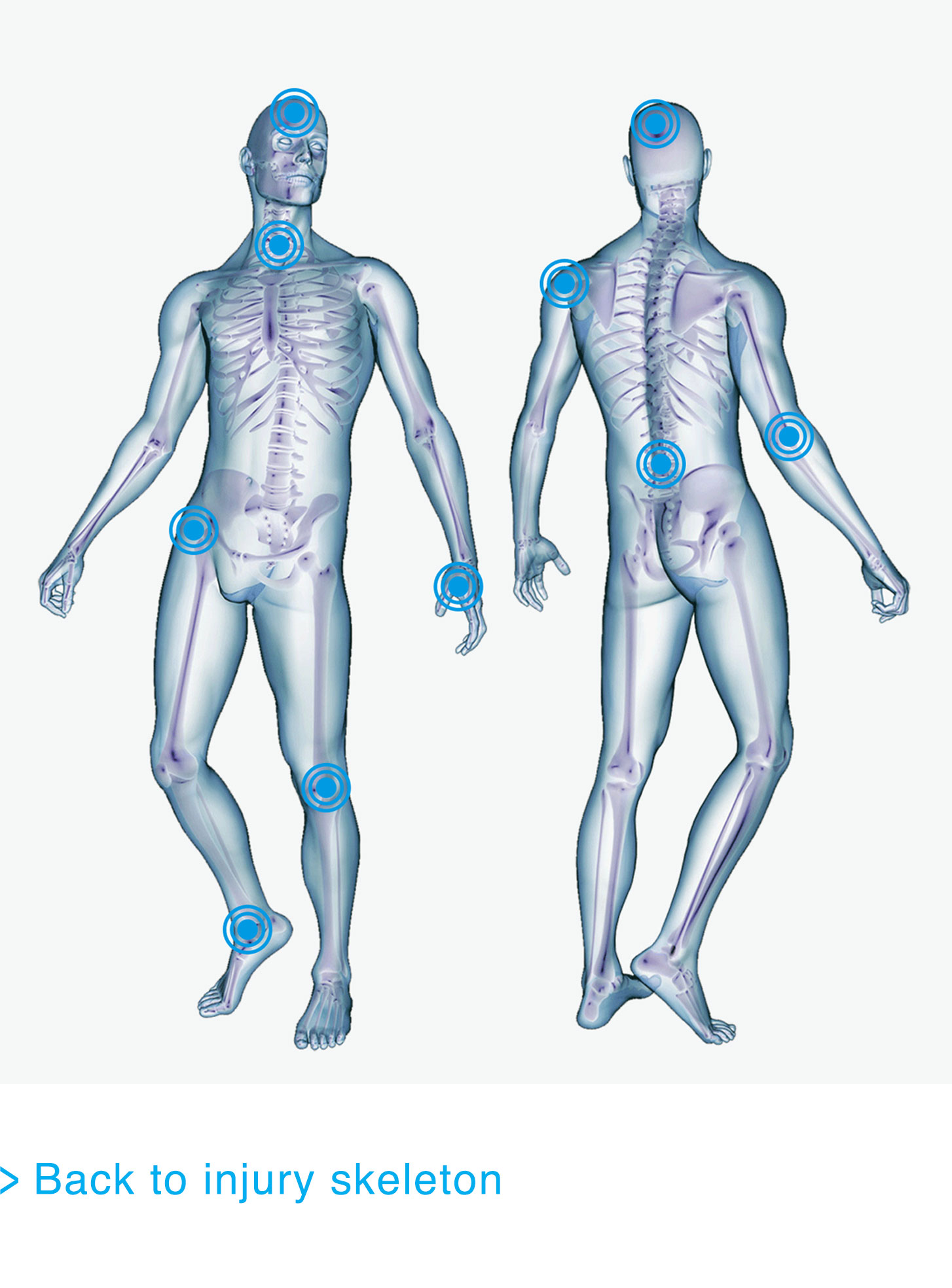Back pain creates significant costs for businesses. In the UK, the total cost of back pain corresponds to 1-2 per cent of gross domestic product.
Fascinating facts
- On any given day, one per cent of the UK’s working population are on sick leave due to a back problem.
- Back issues cost the UK healthcare sector £2bn every year.

Related injuries
Facet joints are found between the joints of the vertebrae, which are present on both sides of the spine. They are there to provide flexibility to the spine enabling you to bend at the waist. Each vertebra has two sets of facet joints. One pair faces upward (superior articular facet) and one downward (inferior articular facet).
Facet Joint Syndrome is a problem with movement of the facet joints of the spine (the place where each vertebra meets the one below, at the rear of the spine). If this does not resolve it can develop into facet joint dysfunction.
Occurrence/Frequency of Injury
If one of the joints becomes stiff or too mobile, then inflammation and pain is often the result. The most common cause of facet joint pain is trauma, like a car accident or a fall. It can also be from repetitive minor trauma caused by, for instance, poor posture.
Lower back pain and neck pain are the commonest symptoms of Facet Joint Syndrome as these are the areas typically affected and muscle spasms are not unusual if the pain does not resolve.
If the problem is not treated and does not recover within 12 weeks, Facet Joint Syndrome will become facet joint dysfunction suggesting an on-going underlying mechanical or structural issues.
Treatment and Recovery Timeframes
- Avoidance of aggravating factors and provision of exercises by a physiotherapist is normally enough to settle down and resolve Facet Joint Syndrome.
-
Healing of soft tissue should occur within a few weeks, but most individuals can return to work immediately or within 6 weeks following injury. However, they need to be monitored closely to ensure work activities do not unnecessarily aggravate the symptoms.
-
Symptoms may still be present in 20% to 40% of individuals 6 months after injury, but the prognosis is good and symptoms should resolve.
-
Despite appropriate physiotherapy management, a small percentage of facet joint sprains fail to improve and may require other intervention. A corticosteroid injection into the facet joint is often used to help alleviate symptoms, but there is little evidence that this leads to significant improvements.
Interesting Facts
Tiger Woods has withdrawn from golf tournaments due to Facet Joint Syndrome in his neck but strenuously denies this being related to that infamous car crash ....
About 8 in 10 people have one or more bouts of low back pain during their lifetime. In most cases, it is not due to a serious disease or injury, and the exact cause is unclear.
This type of injury is known as non- specific lower back pain due to the fact that it is difficult to determine the cause of the injury as it can be due to a ligament, muscle or disc issue.
In the first instance, general lower back pain will be diagnosed and symptoms should settle down within 2-3 months if suitable advice is followed. Only if the symptoms are severe or particularly disabling will investigation be undertaken, but even this may not provide a definitive diagnosis. When symptoms continue for over six months, a patient is classified as suffering from chronic low back pain.
Occurrence/Frequency of Injury
The general cause of each individual case of lower back pain is different, but there are a number of factors that interlink to increase the likelihood of someone suffering from back pain. These include:
-
Poor posture
-
Bending awkwardly
-
Lifting with incorrect technique
-
Being overweight
-
Being inactive
-
Other conditions such as osteoarthritis and rheumatoid arthritis
Treatment and Recovery Timeframes
-
90% of people with acute non-specific back pain will recover within 4-6 weeks by remaining active, avoiding aggravating activities such as heavy lifting and taking suitable medication such as ibuprofen.
-
In cases that last longer than 4-6 weeks, a short course of physiotherapy may be required to ensure the correct exercises and advice are followed in order to alleviate the symptoms.
People working in roles that involve medium to heavy lifting may require a few days off to get over the acute symptoms, but, once these have settled, employees should be encouraged back to work as soon as possible. Suitable modified duties or reduced hours for a short period of time can help them remain active and reduce the time taken to recover from the injury. This is crucial to an employee's long term recovery and can help prevent the condition becoming chronic, which ultimately leads to additional treatment and investigations that cause longer absences.
Interesting Facts
Two of the most common causes of low back pain are incorrect lifting techniques and sustained poor postures. Occasional weekend gardeners are some of the worst offenders by doing too much in one go. Our advice: don't be a 'hero'. There's no Olympic medal for fastest hedge pruner and you'll get no key to the city for weeding the lawn in one day.
Sacro Iliac Joint (SIJ) Dysfunction refers to pain in the sacro iliac region or lower back area - sounds simple but this isn't easy to diagnose. The sacroiliac joint is located in the lower part of the back and joins the tail bone (sacrum) to one of the pelvic bones (ilium). There are two sacroiliac joints - one on either side of the spine.
Occurrence/Frequency of Injury
During certain movements of the spine and hips, stretching or compressive forces are placed on the sacroiliac joints and surrounding ligaments. If these forces are excessive, injury to the sacroiliac joint may occur. This is known as Sacroiliac Joint Dysfunction. This can be from bending, sitting, lifting, arching or twisting movements of the spine, or from weight bearing forces associated with running or jumping. Injury to the sacroiliac joint may occur traumatically or due to repetitive or prolonged forces over time. The underlying cause is often osteoarthritic changes, pregnancy or abnormal walking patterns. Symptoms will include:
-
Pain in the lower back and buttock
-
Low back pain which is made worse by specific movements
-
A feeling that the Sacro iliac joint is 'blocked'
-
Often difficulty in putting on and off shoes and socks, rolling out of bed or even going up and down stairs.
Treatment and Recovery Timeframes
-
The first step is to rest from the aggravating activities and time off work may be required or a change to lighter duties. If symptoms do not settle, physiotherapy should be provided to stabilise and stretch the SIJ.
-
In most cases this will be enough to settle the SIJ and enable a return to normal function, but if recovery is not achieved a SIJ belt, stronger anti- inflammatories or even an injection into the SIJ joint may be needed.
-
In severe cases surgery may be required to fuse the SI joints. In this surgery, the cartilage covering the surfaces of the SI joints is removed and the bones are held together with plates and screws until they grow together (fuse). This eliminates all motion at the SI joints and typically relieves the pain.
-
Ultimately recovery timeframes are dependent on individuals and how they respond to the treatment provided. Most cases should settle within 4-6 weeks with suitable treatment provision.
Interesting Facts
Over 30 muscles can affect overall Sacro Iliac joint stability - that's a lot of muscles to work on and that's not including the ligaments.


